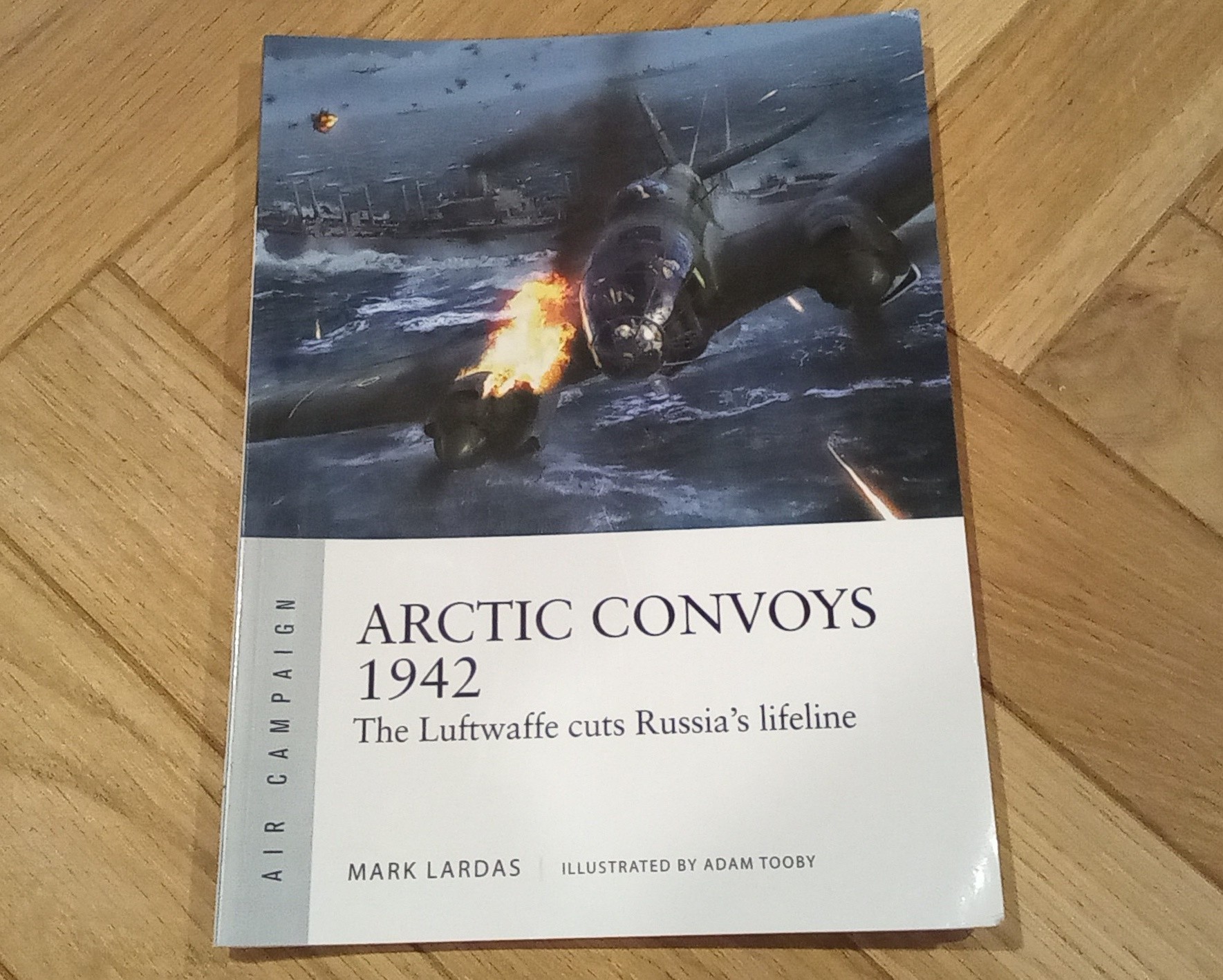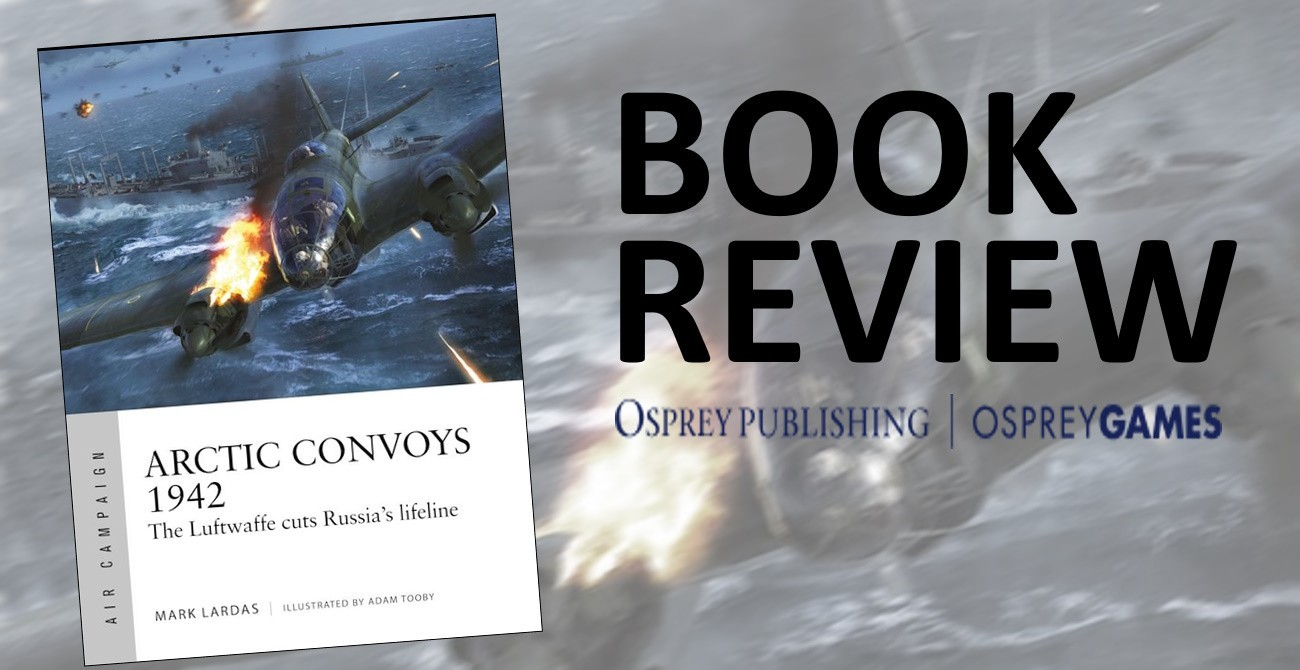
A recent history of the most crucial few months of the Arctic Convoys, when Germany's air power forced the Allies to retreat to the cover of winter, by Mark Lardas (Author) and Adam Tooby (Illustrator). 96 pages with colour plates, tables, battle scenes, "bird's eye view", maps & diagrams, and expert analysis.
Pressing the attack

Leaving after the attack
And again.
Table of Contents
- Introduction
- Chronology
- Attacker's Capabilities
- Defender's Capabilities
- Campaign Objectives
- The Campaign
- Aftermath and Analysis
- Conclusion
- Bibliography
- Index
One of the more graceful planes to fly in WWII.
And another.
Review,
A very good summary of how the Luftwaffe tried to cut the lifeline between Britian and Russia, and did a fair job of it, albeit for a limited time.
The book is rather formulaic in that it breakdowns into the Axis, Allies, the campaign, analysis sections, where I would have expected it to be focused on the Luftwaffe alone, there being enough to write about it.
There is a great irony in that the British staged two commando raids in Norway (1941) to draw German forces there, away from the main Allied effort in Europe. This convinced Hitler the Allies were going to invade from the north, and he redeployed forces to match. This had the undesirable result of far greater attention on the shipping than anticipated, with losses mounting. But that played out to favor the Allies, too. The shipping from America to Britian was greater in term of tonnage and ships than that from Britian to Russia. And Stalin did not care about British losses as, in his view, Russia was doing all the heavy lifting in terms of losses of men and materials (largely as a result of his own tactics - but that's a side argument).
There is plenty of details and analysis in the book, and some brief commentary around Nazi politics, page 33, "It did, however, matter to the Luftwaffe. While the Luftwaffe was fighting foreign enemies in 1941 and 1942, the opponents it most desired to triumph over were it rivals services, the Wehrmacht and the Kriegsmarine." The idea being Hitler's that if the services did not trust each other, they wouldn't plot against him. Nor would they achieve battlefield efficiencies.
The Luftwaffe was hamstrung from being truly devastating on the Arctic shipping due in part to two factors: not getting enough aircraft to the theater with the attendant logistical difficulties, and the weather. As is mentioned several times in the text, the weather favored no one, and if you were out of your aircraft, your lifespan was measured in minutes.
Despite the book being about the Luftwaffe, I was intrigued to read about Hurricats. That is, Hurricanes catapulted from ships to act in defense of the convoy, but then ditched once no longer needed. Given the shortages of aircraft, a one shot launch of an aircraft only to ditch it beggars belief.
The text is well supported by maps and diagrams, and the colour plates are very well done, too (see samples below).
Something I did find disconcerting was the practice of having the explanation for the page opposite at the top of the page I was reading, refer images. It breaks the flow of reading to turn the page and then look for the continuing text.
The book includes a good discussion on the merits or otherwise of the Luftwaffe's bombers, dive-bombers, torpedo bombers, and glide bombers, their accuracy and tactics. Note there are no colour plates of those aircraft (Ju 88, Ju 87, He 111, He 115, BV 138, and Fw 200).
There is lots to like about the book, and I'd definitely recommend it to those interested in the Luftwaffe or the Arctic shipping saga.
The explanation for the diagram right is at the top of the page, left.
Maps are clear and easy to read, conveying information in a concise manner.
Arctic Convoys 1942 The Luftwaffe cuts Russia's lifeline
Author: Mark Lardas
Illustrator: Adam Tooby
Published: 15 Sep 2022
Format: Paperback
Edition: 1st
Extent: 96
ISBN9781472852434
Imprint: Osprey Publishing
Illustrations: Illustrated throughout with around 60 photos and at least 14pp of colour illustrations
Dimensions: 248 x 184 mm
Series: Air Campaign
Short code: ACM 32
Publisher: Bloomsbury Publishing
Available from Osprey Publishing as a paperback, Ebook [PDF] and Ebook [Epub & Mobi]
Please remember, when contacting retailers or manufacturers, to mention that you saw their products highlighted here – on AEROSCALE.

